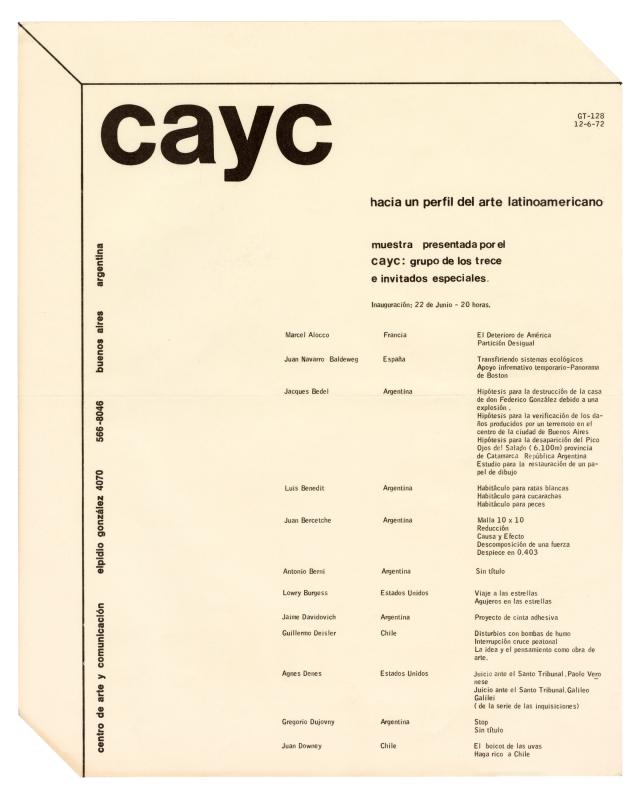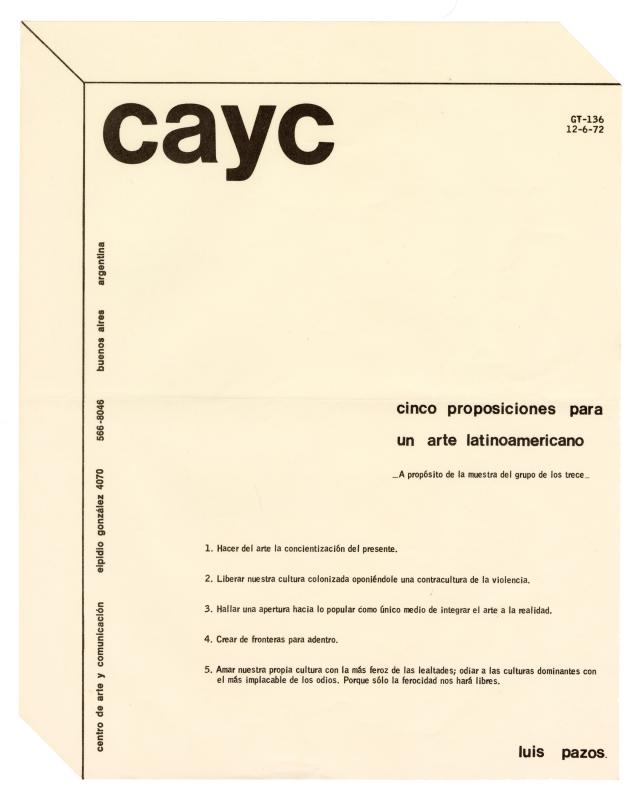Ever since it was founded, the CAYC (Centro de Arte y Comunicación), helmed by the cultural promoter, artist, and businessman Jorge Glusberg, was intended as an interdisciplinary space where an experimental art movement could flourish. The establishment of collaborative networks connecting local and international artists and critics played a key role in this process. The exhibitions shone a light on these exchanges, in which overviews of trends or individual artists introduced the innovations of international contemporary art and made Argentine and Latin American artists better known on the global scene.
In an article titled Hacia un perfil del arte latinoamericano, this newsletter announces the CAYC’s involvement in the Salón de la Independencia in Quito, the capital of Ecuador. This was one of the first times that Glusberg used this name, which underscores his particular way of identifying his experimental project, an undertaking that was based on what was, in the international arena, referred to as “systems esthetics.” The title’s itinerant promise was fulfilled a month after Hacia un perfil… was presented at the III Bienal Coltejer in Medellín, Colombia, which opened in May 1972. After that event, Glusberg said: “There is no Latin American art as such, but the region’s individual countries do share a common problem in terms of their revolutionary situation.” This statement indicated a change in the discourse emanating from the center in Buenos Aires that, in its early years, had spoken highly of the promising relationship between art and technological development. From that point on, the emphasis was on the political aspect of the project, while the artist’s role now consisted of highlighting “the conflicts caused by the unjust social relationships that are rampant in Latin American countries.” There was no mistaking the veiled reference to the dictatorial regimes that held power in the region. Nevertheless, art and cybernetics exhibitions were shown internationally in tandem with Hacia un perfil… on several occasions in the following years.
In mid-1972 this change in the CAYC’s strategies coincided with the first presentations organized by the Grupo de los Trece, a group of dissimilar artists that had coalesced around the central figure of Glusberg. The article in this newsletter lists the group’s original membership, but that lineup didn’t last long. Both the Conceptual artist Horacio Zabala and the architect and visual artist Clorindo Testa—who are listed here as “guests”—would, in later years, become key members of the group.
[For additional information see, GT-128 (doc. 1476410), and for more on Perfil see GT-136 (doc. no. 1476334)].


